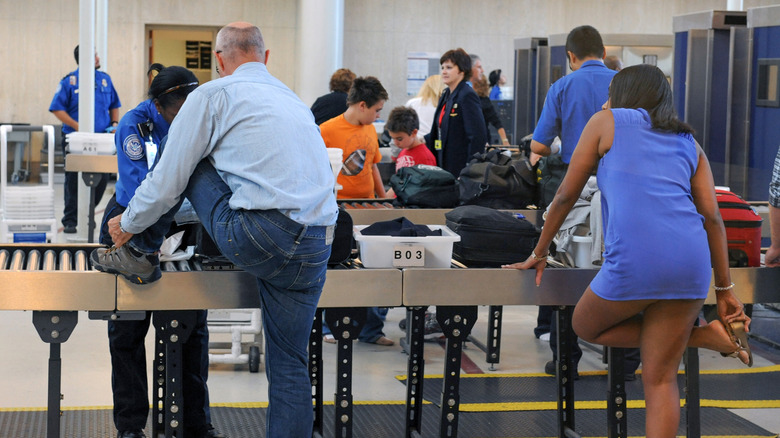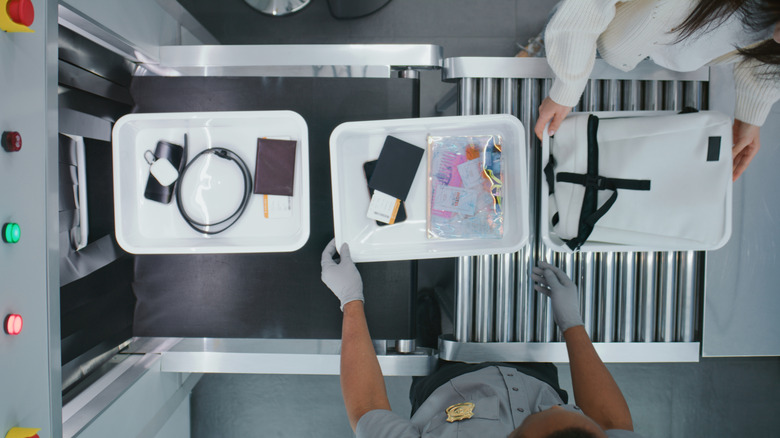It's Not Just You. Here's Why TSA Rules Are Always Annoyingly Inconsistent
Everyone wants to avoid mistakes that could slow you down at airport security and figure out the hacks to zip through TSA before their next flight, but it seems like the rules change all the time. Sometimes you might be told to leave your shoes on and keep your laptop in the bag, and other times it's shoes off, jacket off, belt off, liquids and electronics in the bin. If you've had this experience, you're not alone. TSA regulations are different depending on what airport you go to, what TSA officer is working, and even which lane you end up in. There are a few reasons for this including, intentional security strategies, differences in technology, and the level of enforcement at different airports.
While you might feel like you're living in an alternate reality when you hear a TSA agent shouting at passengers to do the opposite of what they were shouting at you to do on the last flight you took, this is something that happens all the time. There's no doubt that TSA rules are inconsistent. So, when you take a flight, the best thing you can do is to listen to what TSA officers are instructing the people in front of you to do. If you're not sure what the rules are at a particular airport, it's a good idea to ask. In fact, you may want to ask even if you've been through that airport before. This is because the TSA apparently makes the rules inconsistent on purpose to make it harder for those trying to circumvent the rules to know what to expect — but that's not the only explanation for this frustrating phenomenon.
Why do TSA rules seem to vary so much?
One reason why you may be expected to take certain objects out of your carry-on at security checkpoints at some airports and be able to send them along the belt in your bag at others is that not all airports have the same technology available. Modern TSA equipment can make procedures a lot simpler, allowing passengers to leave laptops and liquids in their bags — but not every airport has that technology. In fact, to make things extra confusing, at some airports certain lanes may have upgraded machines while others do not, so even if you went through the same airport last week you might find yourself facing different regulations when you get to the front of the line.
While the actual regulations for what is and isn't allowed on a plane are rigid (and you can double check those on the TSA website) the individual officers are also different. So, how strictly different regulations are enforced may vary, and they may not be enforced equally across the board. In addition to individual biases, some protocols can get passengers singled out. There are some normal behaviors that cause TSA to watch you more closely during screening, from yawning to making polite conversation. In some cases, even equipment has led to biased security screenings, with scanners not being designed to identify thicker hair textures and styles more common for Black Americans.

